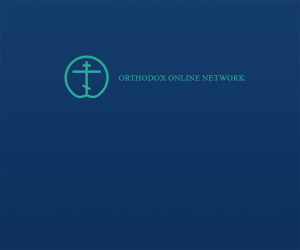يعتقد السبتيون انهم أطهر الناس طرّا، فهم-كما يعتبرون انفسهم- لم يتوهوا كما تاه مسيحيون كثيرون، اذ “طلّقوا” هم -وحدهم- تعاليم عديدة لا تتوافق والكتاب المقدس. ولعل ما يفضح كبرياءهم ويجعلك تعتقد انهم أقفلوا نهائيا على انفسهم وما يعتقدونه صحيحا، هو انهم رفضوا اي حوار مع الكنائس، وبقوا أنقياء ومحافظين على العهد الاول، كما يدّعون. ومن الأمور المضلّة التي يفتخرون بها أنهم يجدّفون على تكريم القديسين وذخائرهم وصورهم… والصلاة من اجل الراقدين والمسحة المقدسة، وغيرها… (انظر: إيمان الأدفنتست السبتيين، صفحة 273).
الموضوعان الاخيران (الصلاة من اجل الراقدين وسر الزيت المقدس) عولجا سابقاً. سنحاول، في هذا المقال، أن نفنّد انحرافهم حول عدم تكريمهم القديسين وصوَرَهم وذخائرَهم، على أن نتناول، في مقالات لاحقة، بعض انحرافاتهم الاخرى.
ليس تكريم القديسين (او الابتهال اليهم) وصوَرِهم وذخائرِهم عبادةً لهم، ولا هو “بضلال” او “مِن حِيَل الشيطان”، كما يقول السبتيون (إلن هوايت، الصراع العظيم، صفحة 65 و617). فالعبادة لغير الإله الواحد لم نرفعها يوما، وذلك أن شهادتنا ظاهرة جليّا، ولا نحتاج الى مَن يفسر عقائدنا ويحاربنا على أساس توهّماته. وهذا ما حاولَتْه، في هذا السياق، نبيّة السبتيين (هوايت)، اذ اعتبرت أن ما أقرَّه المجمع المسكوني السابع (787) لجهة تكريم صُوَر القديسين (وذخائرهم)، عملٌ غايته إعطاء “المهتدين من الوثنية الى المسيحية شيئا كبديل من عبادة الاوثان” (م.ن، صفحة 58). لا نعلم من اين استوحت هذه السيدة هذا التفسير المنحرف، ولكننا نعرف تماما أن آباء المجمع أبرياء منه، وذلك انهم أمروا بتكريم صور الرب وقديسيه (وذخائر القديسين)، باعتبارها مسلّمة إلهية تؤكد حقيقة التجسد الإلهي (انظر وقائع جلسات هذا المجمع وقرارته).
والحال أن القديسين هم ثمرة حب الله، ووجه من وجوه حضوره وتغلّبه على الخطيئة والموت. وكل إنكار لهم هو إنكار لدعوة الله: “كونوا قديسين لأني انا قدوس” (أحبار 11: 45؛ 1بطرس 1: 16). هذا الكلام الإلهي، وإنْ عنى الكنيسةَ “المجاهدة” في هذا الدهر، فهو يبقى يخصّ الذين أحبوا الله بصدق كبير ورقدوا على رجاء القيامة، لان الذي قهر الموت هو غالبه فيهم ومقدّسهم في كل حال ووقت. يقول بولس الإلهي: “اني واثق بأنه لا موت ولا حياة… بوسعها أن تفصلنا عن محبة الله التي في المسيح يسوع ربنا” (رومية 8: 38و39)، وهذا الكلام يخرج على الحقيقة والتعزية إن لم يُفهم أن الله يحفظ أحباءه في حضرته الأبدية (الكنيسة المنتصرة)، وعلى هذا الأساس يجب أن نقبل كلام السيد: “حيث أكون انا يكون خادمي” (يوحنا 8: 26، 14: 3 و17: 24). وهذا يدفعنا توّاً الى القول إن العلاقة بين الكنيسة المنظورة وغير المنظورة قائمة على أساس وحدة جسد المسيح. فتكريم القديسين وطلب شفاعتهم، في تراثنا، يبنى على الإيمان بوحدة الكنيسة، اذ اننا نثق بأن القديسين الذين “تبرَّأوا من الخطيئة” التي ما زالت تحاربنا، وباتوا أقوى من المدى والزمان، هم، في المسيح يسوع، معنا ونحن معهم، وتاليا يحفظونا ويشدّدونا بأدعيتهم وتسبحتهم غير المنقطعة التي تعلّي الله وملكوته وترفض كل شر في العالم (رؤيا 6: 9-11). وذلك أن الذي “أَحنى السموات” وخلَّصنا، ألغى ما هو فوق وما هو تحت، وأقام لنا القديسين، في مسيرتنا الجهادية، عضدا ودعوة جدّية وإنجيلا حيا مفتوحا ومقروءاً ومطاعا. ولذلك كل ابتعاد عنهم أو إبعاد لهم (او لصورهم وذخائرهم) هو تقزيم لجسد المسيح الواحد وإنقاص لغلبته. يقول القديس نيقولا كاباسيلاس: إن “قداسة القديسين هي أعظم عطايا الله للإنسان، والكنيسة تضحي شريرة وجاحدة إن لم تشكره عليها” (انظر كتابه: “شرح القداس الإلهي”، صفحة 132 و 133).
ثمة، في الروحانية المسيحية، علاقة وثيقة ما بين تكريم القديسين وتكريم صوَرهم وذخائرهم. فالايقونة والذخيرة هما بمثابة حضور مَن يمثّلان، ويُعتبران “كنقطة اتصال بين أعضاء الكنيسة والذين سبقوهم”، وهما تاليا يساعدان المؤمنين على الصلاة واعتبار القديسين “اشخاصا معاصرين وأصدقاء حقيقيين” (المطران كاليستوس وير). ولا شيء يفسّر تحريف السبتيين -ومن لفّ لفّهم- لهذا الأمر، إلا جهلهم الحقيقة وتلهّيهم بالقشور، فهم اذ ركنوا الى حروف الوصايا، لم يعوا، مثلا، أن تحريم التصوير، الذي هو وصية قديمة (خروج 20 :4 و5)، أبطله مجيء ابن الله الى العالم. وايضا، وفي السياق عينه، يمكن القول ان رفضهم ذخائر القديسين -وهي عادة قديمة تعود الى الأزمنة المسيحية الاولى- هو، بالحقيقة، رفض للقداسة وعمل الله في التاريخ، وتاليا تحريف لتعليم الكتاب المقدس الذي يدّعي السبتيون الركون اليه “وحده”. فثمة آيات كتابية عدة تبيّن فائدة ذخائر القديسين وتستدعي واجب تكريمها. نقرأ في كتاب الملوك الرابع: “فبينما هم يقبرون رجلا أبصروا الغزاة، فألقوا الرجل الميت في قبر أليشاع، فلما هبط الرجل ومس عظام أليشاع عاش وقام على قدميه” (31: 21، 20: 7؛ انظر ايضا 3ملوك 13: 25-31؛ ويعلّمنا العهد الجديد أن قوة الرب تكمن حتى في ثيابه: متى 9: 20-21، 14: 36؛ او في ظل رسله: اعمال الرسل 5: 15، وفي أشيائهم الخاصة 19: 11-12). وقد حصل ما يشبه هذه المعجزات في حياة عدد من القديسين بعد انتقاهم، ففي يوم رقاد القديس نكتاريوس “وبينما جثمانه الطاهر لا يزال في المستشفى، أُلقيت قطعة من ثيابه بالصدفة على مريض مجاور فشفي في الحال” (راجع كتاب: زاد الارثوذكسية، صفحة 286)… غير أن البحث، على إيجازه، لا يكمل إن لم نؤكد بشدّة أن تكريم ذخائر القديسين واجب يتطلبه حدث تدبير الله الخلاصي. فالله الذي كرَّم البشرية بتجسده وقهرِهِ -في الجسد- الخطيئةَ والموتَ، رفع الإنسان الى الأُلُوهة. ولعل هذا ما دفع الآباء القديسين في المجمع المسكوني السابع الى أن يدافعوا بآن عن الايقونة وبقايا القديسين (القانون ال 7).
لا تُفهم المسيحية بأنها ديانة رجائية وحسب (اي أن عطاءاتها تختص بالعالم الآتي فقط)، وإنما ايضا هي “كليا” ديانة الحاضر. فالمسيح الرب الذي أتى وخلَّصَنا ووعدنا بالحياة الأبدية أعطانا “الآن وهنا” أن نتذوّق فرح القيامة العظيم، وهو يقول هذا صريحا، في هذا الدهر، في أجساد القديسين الذين غلبوا الموت وباتوا مقرّاً للروح القدس وعمله.

